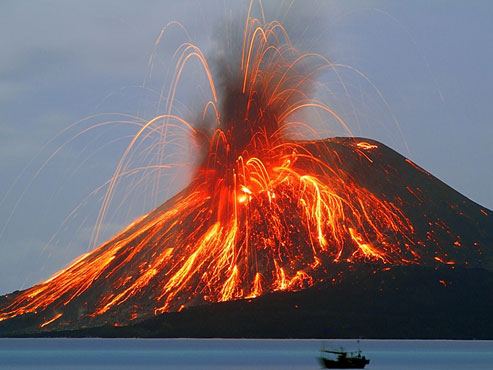Natural Disasters - Volcano
Volcanic eruptions may come about it many different ways. Some are on a large-scale, and other are small eruptions. Small eruptions occur in places like Hawaii, whereas infrequent supervolcano's occur in places like Lake Toba. The word Volcano comes from the word "Vulcan" which is the god of fire in Roman mythology. Lava comes out of a volcano and contains a high percentage of silica, and tends to be highly viscous. Volcano's can be classified in five different shapes:
Volcano's can either be active, dormant or extinct. Active volcano's are volcano's showing no sign of rest. Dormant volcano's are currently not active but could possibly erupt again. Extinct volcano's are those highly unlikely. Volcano's don't necessarily have to be on earth. The largest mountain in this galaxy in this solar system - Olympus Mons, is a volcano but is extinct. Lava from volcano's is acidic and therefore is a contribution towards acid rain. The high temperatures causes nitrogen dioxide to be converted into nitric oxides and therefore contributes towards acid rain, photochemical smog, ozone depletion, and global warming. Example:
|



0 comment/s:
Post a Comment